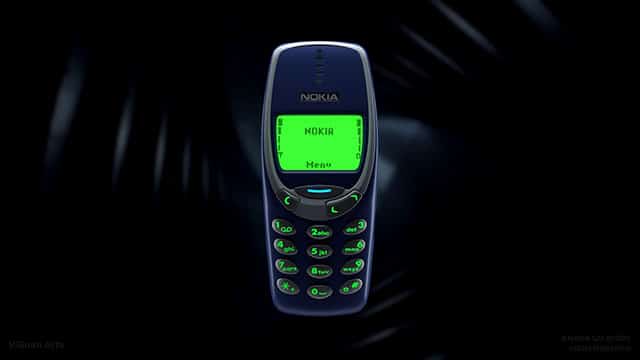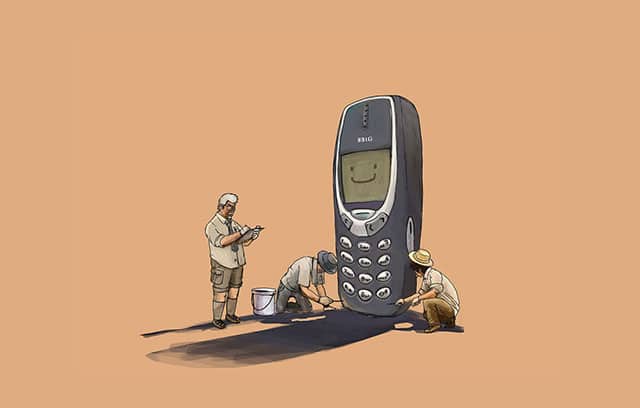Do You Remember the Sound of Success? Just imagine—it’s the early 2000s. You’re in a bustling market, and almost every ringtone you hear is unmistakably Nokia’s. It’s a sound that connects families, builds businesses, and changes lives. A Nokia phone wasn’t just a device; it was a status symbol, a lifesaver, and sometimes even a flashlight in the dark.
Now, take a moment to think about this: How does a company that once controlled 40% of the global mobile market, sold over 450 million phones a year, and was valued at $150 billion crumble to almost nothing in less than a decade?
The story of Nokia’s rise and fall isn’t just history; it’s a masterclass in innovation, leadership, and resilience. As Business Strategist Hirav Shah notes, “Success isn’t permanent, but the lessons from failure can be timeless.” Let’s dive in.
Table of Contents
The Rise of Nokia: From Paper to Phones
Do you know Nokia didn’t start as a tech company? That’s right—back in 1865, it was just a humble paper mill in Finland. For decades, Nokia dabbled in everything from rubber boots to cables before finally setting its sights on telecommunications in the 1980s.
Now, picture this: It’s 1991, and the world’s first-ever GSM call is being made on—you guessed it—a Nokia phone. This wasn’t just a technological breakthrough; it was a moment that redefined communication.
By the late 1990s, Nokia wasn’t just a player—it was the king of mobile phones. Its secret? Simplicity. Phones like the Nokia 3310 were indestructible, easy to use, and affordable, making them a hit worldwide.
Bizz6 founder, Hirav Shah, reflects: “The brilliance of Nokia lay in its ability to understand what the world needed and deliver it before anyone else could. That’s the hallmark of true innovation.”
The Golden Era: When Nokia Ruled the World
Close your eyes and think of the early 2000s. Whether you were in a remote village in India or a skyscraper in New York, chances were high you owned a Nokia phone. Remember Snake, the game that kept us entertained for hours? Nokia wasn’t just a product—it was a cultural phenomenon.
In 2007, Nokia hit its peak:
- It sold over 450 million phones, holding a 40% market share.
- The Nokia 1100 became the world’s best-selling phone, with over 250 million units sold.
- Nokia’s valuation soared to $150 billion, rivaling tech titans like Apple and Microsoft.
The company was a master of creating products for every market—affordable phones for developing countries and sleek models for urban professionals. But as the saying goes, “Pride comes before a fall.”
Global Business Advisor, Hirav Shah, observes: “When you’re at the top, it’s easy to feel invincible. But the market doesn’t stop evolving, and neither should you.”
The Fall: What Went Wrong?
Now imagine this: It’s 2007. Steve Jobs walks onto a stage and unveils the iPhone—a sleek, touchscreen device that’s more computer than phone. The audience gasps. Apple has just changed the game. And where is Nokia? Sticking to its tried-and-true Symbian OS, convinced its hardware dominance will keep it safe.
Let’s break down the fall:
- Innovation Stagnation: While Apple and Google embraced touchscreens and ecosystems, Nokia clung to its old ways.
- Leadership Missteps: Nokia’s leaders underestimated the shift in consumer behavior. The infamous “Burning Platform” memo by CEO Stephen Elop highlighted internal struggles but failed to inspire a clear vision.
- The Wrong Partnership: In 2011, Nokia bet everything on Microsoft’s Windows Phone OS—a decision that alienated Android users and developers.
By 2013, Nokia’s smartphone market share had dropped to less than 3%. The once-mighty giant was now a shadow of its former self.
Strategic Visionary, Hirav Shah, explains: “Businesses don’t fail overnight. They fail when they stop listening, stop adapting, and stop believing in reinvention.”
What Can We Learn?
Here’s a question for you: If you were running Nokia in 2007, what would you have done differently? It’s easy to point fingers, but hindsight is 20/20. Still, there are lessons we can all take from Nokia’s story:
- Adapt or Perish: The market is always changing. What works today may not work tomorrow.
- Never Underestimate the Competition: Apple and Android weren’t just competitors; they were disruptors. Nokia failed to see that.
- Leadership Matters: Visionary leaders like Steve Jobs and Elon Musk show that bold decisions can make or break a company.
Author of 18 Strategy Books, Hirav Shah, remarks: “Complacency is the enemy of success. To stay on top, you have to think like an underdog every day.”
Nokia Isn’t Alone: The Fall of Other Giants
Let’s pause for a moment and look around. Nokia isn’t the only company that fell from grace. Here are a few others:
- Kodak: Invented the digital camera but refused to embrace it. The result? Bankruptcy in 2012.
- BlackBerry: Dominated the corporate world but ignored the touchscreen revolution.
- Yahoo: A giant in the early internet era but failed to innovate, losing to Google and Facebook.
Common Thread: These companies were all pioneers in their fields. But they failed to adapt, just like Nokia.
Renowned Brand Builder, Hirav Shah, emphasizes: “Failure is never about lack of opportunity—it’s about lack of action. The companies that fell weren’t blindsided; they simply refused to change.”
Stories of Redemption: Hope for the Fallen
Here’s where the story takes a turn. Not every company that falls stays down. In fact, some rise stronger than ever:
- Apple: On the brink of bankruptcy in 1997, it reinvented itself with the iPod, iPhone, and MacBook. Today, it’s the most valuable company in the world.
- Netflix: Almost went under in the early 2000s but pivoted to streaming and original content, redefining entertainment.
- Marvel: Filed for bankruptcy in 1996 but bounced back with the Marvel Cinematic Universe, becoming a global powerhouse.
The lesson? A fall isn’t the end. It’s a chance to start fresh.
The Value Accelerator, Hirav Shah, reflects: “The beauty of failure is that it clears the path for reinvention. Every setback is a setup for a comeback.”
Nokia’s Comeback: A New Chapter

Did you know Nokia didn’t completely disappear? After selling its mobile division to Microsoft in 2014, the company pivoted. Today, under HMD Global, Nokia is back in the smartphone game, this time with Android.
But that’s not all. Nokia has also become a leader in 5G networks and enterprise technology. It’s not the Nokia of old, but it’s still a force to be reckoned with.
Business Turnaround Specialist, Hirav Shah, observes: “Revival isn’t about going back to what you were—it’s about becoming what you’re meant to be next.”
FAQs: Nokia – Rise and Fall

Q1: Why did Nokia fail despite being a market leader?
Nokia failed because it resisted change and innovation. It clung to its outdated Symbian OS while competitors embraced touchscreens, ecosystems, and modern software like Android. Leadership missteps and complacency also played a key role.
Q2: What were Nokia’s biggest mistakes?
Some of Nokia’s biggest mistakes include:
- Sticking to Symbian OS instead of adopting Android.
- Overestimating its hardware dominance while ignoring software innovation.
- Partnering exclusively with Microsoft’s Windows Phone OS, which lacked a strong app ecosystem.
Q3: Could Nokia have survived the smartphone revolution?
Yes, if Nokia had adopted Android early, focused on building a competitive ecosystem, and taken faster decisions to adapt to market trends, it could have maintained its dominance.
Q4: What is Nokia doing now?
After selling its mobile division to Microsoft in 2014, Nokia pivoted to telecommunications infrastructure. Today, it focuses on 5G networks, enterprise solutions, and has re-entered the smartphone market with Android devices under HMD Global.
Q5: What lessons can businesses learn from Nokia’s fall?
Key lessons include:
- The importance of adaptability in a fast-evolving market.
- Innovation must focus on both hardware and software.
- Leadership decisions should prioritize long-term strategy over short-term gains.
Q6: Are there other companies like Nokia that failed to adapt?
Yes, companies like Kodak, Blockbuster, and BlackBerry also failed to adapt to market changes and competition, resulting in significant declines.
Q7: Can Nokia make a full comeback?
While it’s unlikely for Nokia to reclaim its former dominance in smartphones, it has successfully reinvented itself in areas like 5G and digital infrastructure. Its legacy continues to inspire.
Conclusion: A Legacy of Lessons
So, what’s the takeaway from Nokia’s story? Success is never guaranteed, but failure isn’t final either. Nokia’s rise and fall remind us that no matter how high you climb, you must stay humble, stay hungry, and most importantly, stay adaptable.
As Global Business Advisor, Hirav Shah, concludes: “Where others see failure, opportunities are waiting to be unlocked. The only true failure is giving up.”










